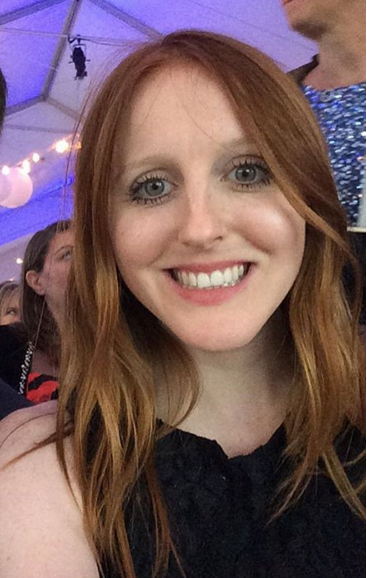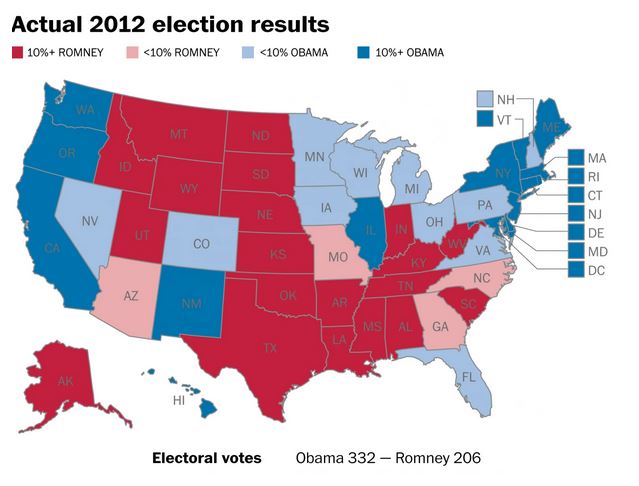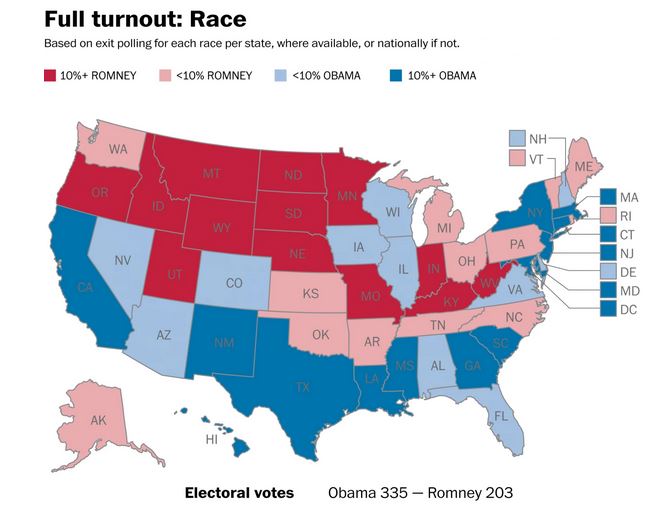What 100% Voter Turnout Would've Looked Like in 2012

By:
President Barack Obama recently talked about the potential benefits of mandatory voting, which would have snagged him even more support in 2012, according to the Washington Post. Compiling the Census Bureau's historic data by race, gender, and state, the publication put together a few images that depict how the presidential election might have turned out had everyone of voting age cast their ballots.
Here's what happened in 2012:
Here's what the electoral map would've looked like if all voting age people voted and if they had voted according to what was typical of their race:
Interestingly, if everyone would have voted, the South and the Pacific Northwest would have flipped allegiances. Instead of the familiar ruby red stronghold of southern states, we see a blue belt across the bottom of America from Florida and South Carolina to Texas on to California. On the other hand, recently loyal Democratic states like Oregon, Washington, and Minnesota would have gone to Mitt Romney.
Either way, Obama would have come out ahead, but that's not the important issue here. What's important is that more people vote because the current system doesn't attract as many people and groups as it could. White voters turn out in higher numbers than black and Hispanic voters, for instance. We've noted before that 2008, Obama's first presidential election, saw a major increase in turnout with 64 percent of the eligible voting population coming out to vote. Although the excitement surrounding Obama's "Change" inspired more people to vote, U.S. voting turnout overall is pretty embarrassing compared to other developed countries, which average around 70 percent.
A 2012 study from the American National Election Studies (ANES) shows that non-voters tend to be more economically liberal (supporting government healthcare, unions, more funding for schools) than those who cast their votes, so making voting a requirement in the U.S. could result in more left-leaning votes at the polls. Another study looked at international elections in 14 countries and found higher turnout among poor voters resulted in more wealth redistribution. Suffice to say, both American political parties would have to be more responsive to issues of income inequality, health care costs, and college tuition if everyone voted.
Of course, not everyone backs the idea of mandatory voting, which is essentially what exists in 38 other countries, including Australia. The idea of forcing people to vote by threatening them with fine is understandably uncomfortable. Not only would the logistics be difficult, but, as scholar Ari Ratner pointed out last year, "refusing to vote itself can be an important form of protest." That would be taken away by mandatory voting.
But most would agree that voting should at least be easier. Oregon recently became the first state to enact automatic voter registration of all eligible voters.
Earlier this week, ATTN: posted a video about the upsides of automatic voter registration:


